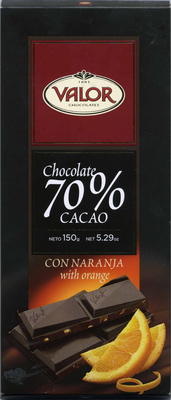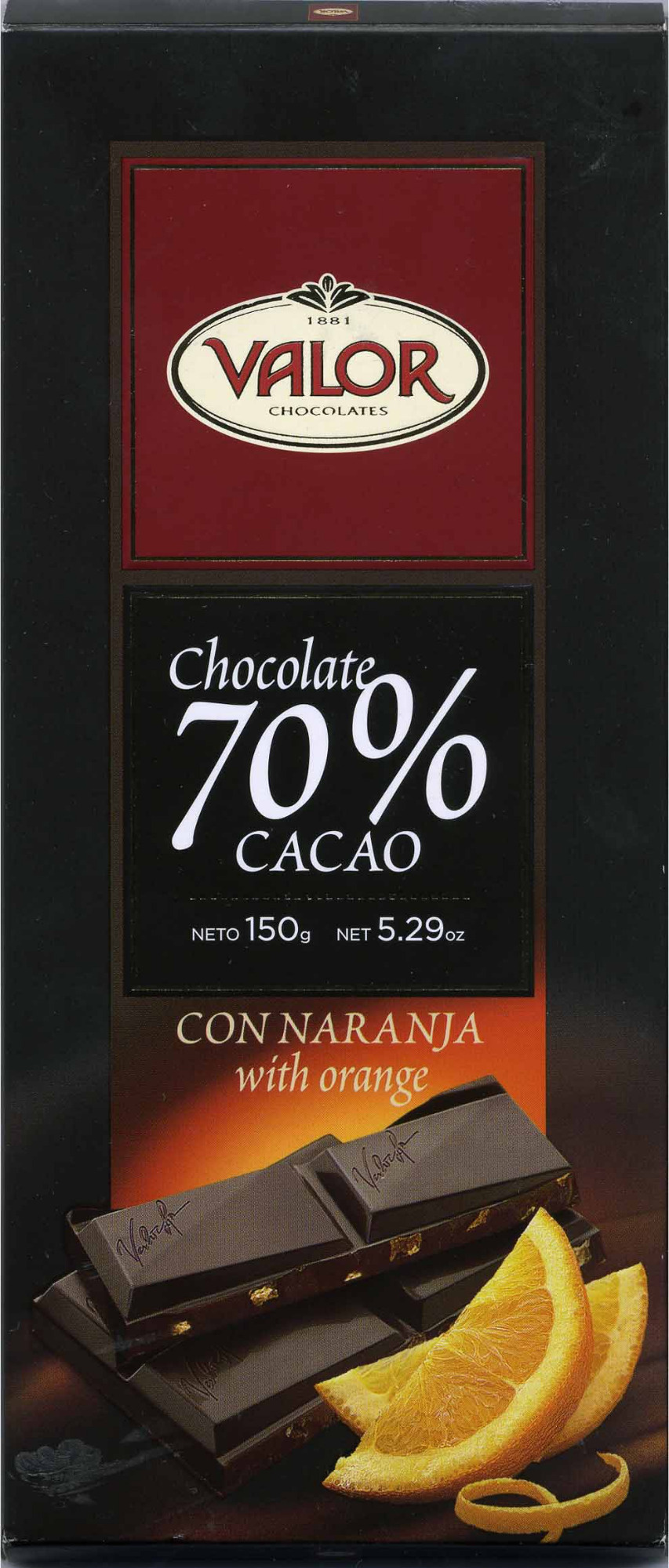Chocolate negro 70% cacao con naranja - Valor - 150 g
This product page is not complete. You can help to complete it by editing it and adding more data from the photos we have, or by taking more photos using the app for Android or iPhone/iPad. Thank you!
×
Barra-kodea: 8410109008852 (EAN / EAN-13)
Izen arrunta: Tableta de chocolate negro con sabor a naranja con un 70% de cacao mínimo.
Kopurua: 150 g
Ontziratzea: es:Caja de cartón, pt:Papel de aluminio
Markak: Valor
Kategoriak: en:Snacks, en:Sweet snacks, en:Cocoa and its products, en:Chocolates, en:Dark chocolates, en:Dark chocolates with orange
Etiketak, ziurtagiriak, sariak: en:Vegetarian, en:Vegan
Manufacturing or processing places: Villajoyosa, Alicante (provincia), Comunidad Valenciana, España
Traceability code: NIF: A-03012655, ES 25.00034/A CE, CHOCOLATES VALOR S.A.
Link to the product page on the official site of the producer: http://www.valor.es/es/tabletas-chocolat...
Dendak: El Corte Inglés
Saltzen diren herrialdeak: Espainia
Matching with your preferences
Ingurumena
Carbon footprint
Ontziratzea
Transportation
Report a problem
Datuen iturria
Product added on by javichu
Last edit of product page on by packbot.
Produktuaren orria -gatik editatua neptuno, thaialagata.






